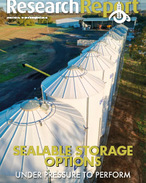This article is 8 years old. Images might not display.
University professor Richard Whittington said the vaccine could only be used after testing had been conducted to determine which virulent serogroups of footrot were present in the flock.
“This involves taking swabs from feet with footrot and culturing them in the laboratory and then applying tests to determine which of the 10 (A to I or M) serogroups are present, and how virulent that isolate is,” Whittington said.
“The correct serogroups can then be incorporated into the vaccine.”
Senior Research Fellow Om Dhungyel conducted most of the field research, and said only one or two serogroups could be incorporated into the vaccine at a time.
“Very good cure rates and at least six months protection result if no more than two serogroups are injected at one time,” Om said.
“Additional ‘rounds’ (a priming and booster shot four weeks apart) of vaccination can be commenced 3 months after starting the first round if more than two serogroups are present in the flock.
“It is still crucial to follow up vaccination with several rounds of thorough foot inspection and culling of any remaining infected sheep.”
The vaccine is now being manufactured by Tréidlia Biovet, but a veterinary practitioner must authorise the supply of the vaccine.
“Approval of the Chief Veterinary Officer is also required in WA, SA and NSW where virulent footrot is a notifiable disease, so discuss this option with your Departmental Veterinary Officer if you are in one of these three states and would like to use vaccine,” Tréidlia Biovet director Mark White said.
Sheep Veterinary Consultant Paul Nilon said he had used the serogroup specific vaccines on a number of flocks in Tasmania.
“[We] usually achieve a good result if we have identified all the virulent serogroups present and the flock manager is meticulous with the post vaccination inspections,” Nilon said.
More information of the use of serogroup specific vaccines is available here.























